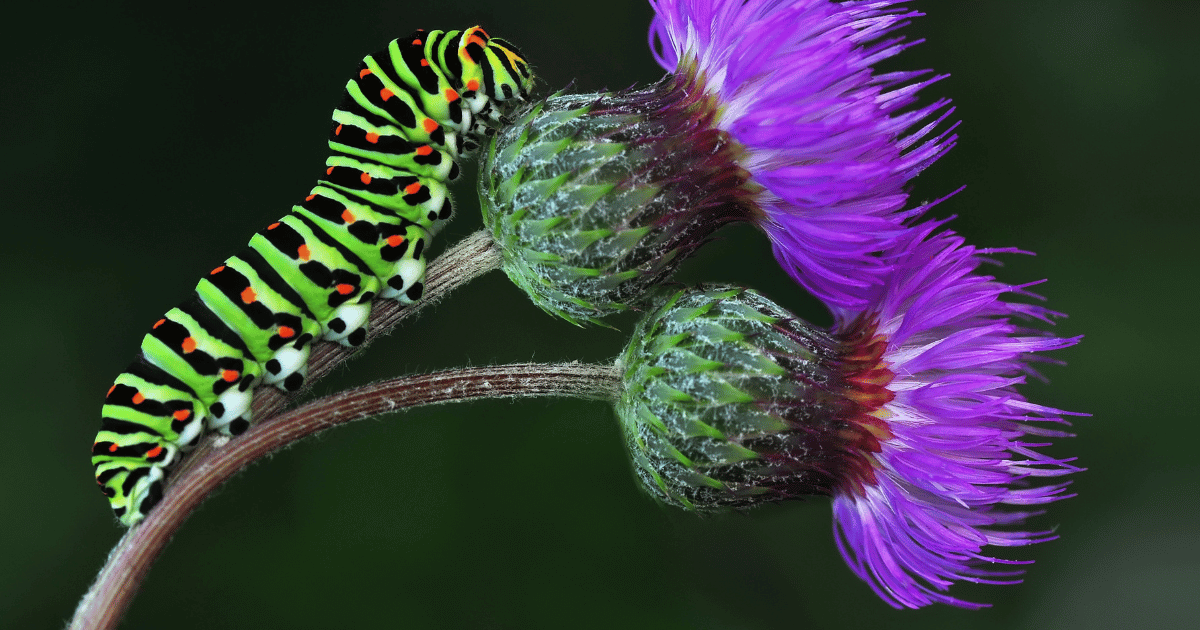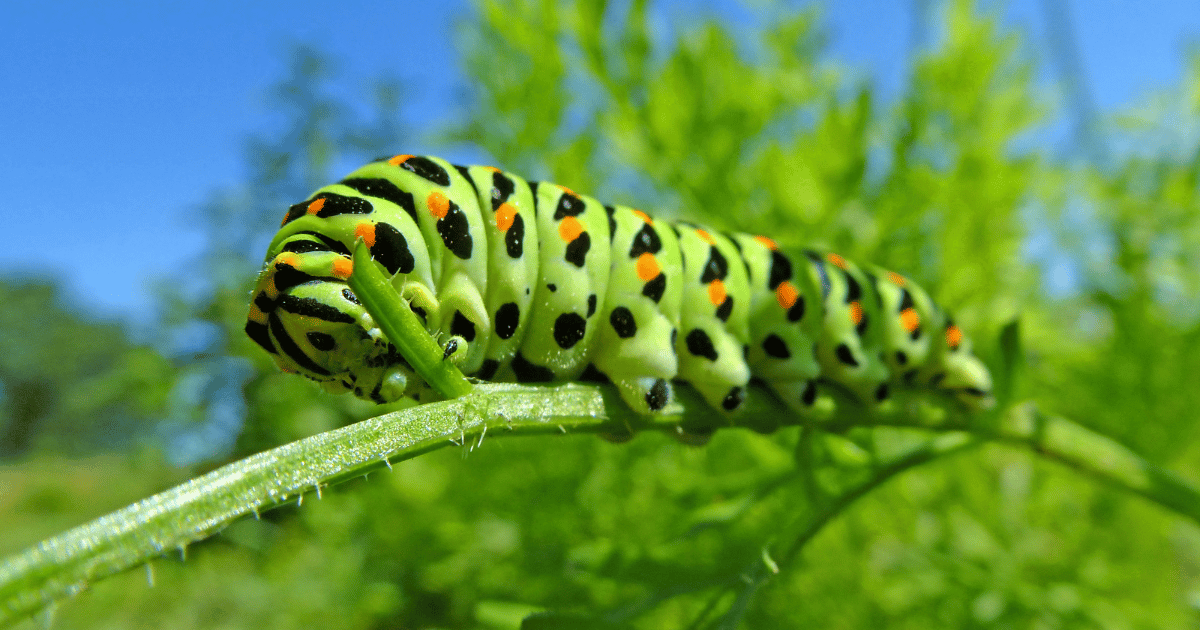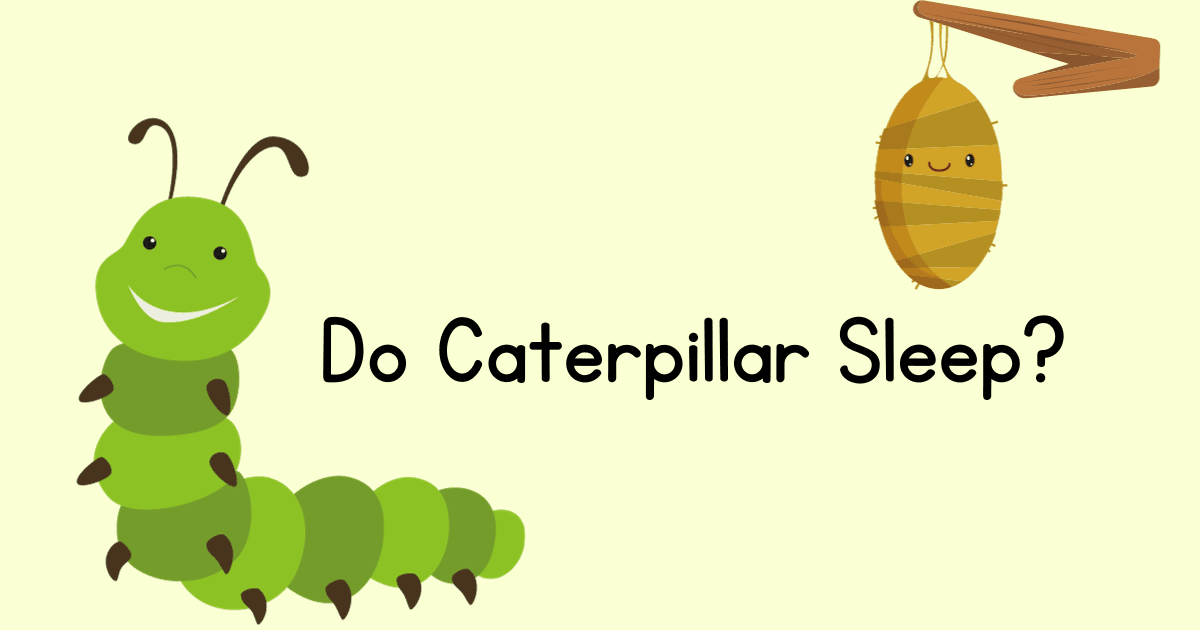Yes, caterpillars do revel in rest intervals akin to sleep. Explore the captivating international of caterpillars in our in-intensity article, ‘Do Caterpillars Sleep?’, wherein we uncover their unique behaviors and the importance of relaxation in their lifecycle.
Introduction

Have you ever paused to ponder whether caterpillars, those charming creatures particular for transformation, ever take a moment to relax or sleep? This question, Do Caterpillars Sleep? sparks curiosity and surprise in many’s minds. In this text, we’ll explore the enigmatic world of caterpillars, aiming to unveil the mysteries surrounding their rest patterns. This adventure into their tiny globe isn’t just about enjoying our curiosity but also about knowledge of the complex information of their lives, which is vital for people who look at or recognize these creatures. As we embark on this exploration, we aim to offer you a deeper insight into the existence of caterpillars, their behavior, and the exciting concept of sleep in the insect world.
Understanding Caterpillar Behavior
To understand if caterpillars sleep, we first want to delve into their everyday exercises. Caterpillars, known for their insatiable urge for food, are the larval level of butterflies and moths. Their primary aim throughout this segment is to eat and grow. They consume vast amounts of leaves, supplying the essential vitamins for speedy increase. This increase necessitates common molting, where caterpillars shed their pores and skin to house their increasing size. In these severe feeding classes, caterpillars show off durations of inactivity.
These moments of stillness increase the question: are these periods akin to sleep, or are they genuinely restful pauses? Knowing those behaviors, we can collectively determine whether caterpillars experience sleep.
The Concept of Sleep in Insects
Insects, including caterpillars, show a shape of relaxation that differs extensively from mammalian sleep. While humans and plenty of animals revel in REM and non-REM sleep levels, insects have an extra rudimentary shape of rest. For caterpillars, this nation is characterized by lowered metabolic pastime and reduced responsiveness to external stimuli. Unlike mammals, caterpillars are no longer near their eyes; instead, their ‘sleep’ is indicated by a substantive decrease in bodily interest. This simplified form of rest is vital for their survival, presenting refreshing breaks for energy conservation and increase. Understanding this primary idea of insect sleep is essential in exploring the precise sleep styles of caterpillars.
Do Caterpillars Sleep? – Unveiling the Mystery
When addressing the question, “Do Caterpillars Sleep?” it’s essential to observe that caterpillars exhibit behaviors indicative of sleep-like states. During those durations, they display a marked lower in the hobby and responsiveness to their surroundings. This state of no activity is crucial for their development because it lets them conserve power and allocate sources closer to growth and eventual metamorphosis. Scientific observations endorse that while caterpillars do not sleep the same way mammals do, their rest periods serve a similar reason for healing and improvement. Therefore, caterpillars revel in sleep, vital for their proper well-being.
Observing Rest Periods in Caterpillars
Observing caterpillars can offer insights into their rest patterns:
- Periods of stillness are commonplace, where caterpillars remain immobile for various lengths.
- Their reaction to outside stimuli, like contact or light, is substantially reduced during these periods.
- Regularity in those restful states suggests a pattern akin to a nap cycle.
- Environmental elements, which include mild, temperature, and safety, impact these resting durations.
- Observing those behaviors in specific species can display versions in rest styles.
When Do Caterpillars Sleep?

They are determining when do caterpillars sleep? famous that their relaxation periods are usually related to their feeding cycles. Most caterpillars are energetic during more remarkable day components, broadly speaking, sunrise and nightfall, after they feed. During the warmer parts of the day and regularly at night, they input restful states to preserve strength and guard themselves from predators. However, this conduct can vary amongst species and is influenced by environmental elements like temperature and light. Understanding the timing of those rest intervals is vital for those studying or caring for caterpillars, as it presents a perception of their herbal rhythms and wishes.
The Role of Rest in a Caterpillar’s Life
Rest is as essential as feeding in a caterpillar’s lifestyle. These periods of no activity aren’t just about conserving strength; they play a critical role in the caterpillar’s boom and improvement. During rest, caterpillars absorb the vitamins from their food, helping their rapid boom. It is also a time for their bodies to prepare for the following section of molting. As they technique the stage of metamorphosis, these relaxation durations become even more crucial. They permit caterpillars to accumulate the electricity required to transform into a butterfly or moth. With enough rest, caterpillars will have the assets essential to complete their life cycle correctly.
Caterpillar Sleep Vs. Butterfly Sleep
Caterpillars and their personal forms, butterflies and moths, show distinct variations in their rest patterns. Because of their speedy growth desires, Caterpillars have extra prolonged and everyday intervals of inaction. In comparison, grownup butterflies and moths have numerous additional relaxation styles. These differences are reflected in their lifestyles, degrees, and physiological wishes. While caterpillars need rest for boom and development, personal butterflies and moths require rest specifically for electricity conservation and keeping off predators.
Fascinating Facts About Caterpillars and Sleep
| Fact | Detail |
|---|---|
| Synchronized Resting | Some caterpillar species exhibit synchronized resting behavior, where groups rest collectively at the same time for safety and environmental adaptation. |
| Rest for Internal Development | Rest periods are not just times of inactivity; they are crucial for internal development, including processing nutrients and preparing for molting. |
| Variation Among Species | Different caterpillar species have unique rest patterns. These patterns are influenced by factors such as habitat, climate, and species-specific behavioral traits. |
| Environmental Influence | Changes in environmental conditions like temperature, light, and humidity can significantly impact the sleep-like states of caterpillars, affecting their duration and frequency. |
| Predator Avoidance | Resting behaviors can also be a strategy for predator avoidance. By remaining still, caterpillars reduce their visibility and chance of being detected by predators. |
| Energy Conservation | Rest is essential for energy conservation. During periods of inactivity, caterpillars conserve energy which is crucial for their growth and eventual metamorphosis. |
| Preparation for Metamorphosis | As caterpillars near the stage of metamorphosis, rest becomes increasingly important. It allows them to accumulate the energy required for the transformation into butterflies or moths. |
Research Studies on Caterpillar Sleep Patterns
Research on caterpillar sleep styles, focusing on diverse aspects of their relaxation behavior, has been significant. Scientists have used several strategies, from field observations to managed laboratory experiments, to understand how and why caterpillars rest. These studies have revealed that the duration of caterpillar rest is critical for its survival and improvement, offering precious insights into the broader subject of entomology. The findings have implications not only for the know-how of caterpillar behavior but also for conserving butterfly and moth species.
Implications of Understanding Caterpillar Sleep

Grasping the concept of caterpillar sleep has broader implications inside the fields of entomology and conservation. This information helps in devising better techniques for the conservation of butterflies and moths, which might be critical pollinators and essential elements of their ecosystems. Additionally, expertise in those rest styles can offer insights into the simple organic methods of insects and contribute to the clinical knowledge of animal conduct.
Conclusion
Ultimately, caterpillars show off sleep-like states essential for their boom, development, and survival. These periods of rest, characterized by inactivity and reduced responsiveness, play a necessary role in their lifestyle cycle, preparing them for the exquisite transformation into butterflies and moths. The exploration of the question “Do Caterpillars Sleep?” satisfies our interest in those tiny creatures and enriches our expertise in the natural international.
FAQs
Do all caterpillars have the same sleep styles?
No, sleep patterns can range extensively amongst one-of-a-kind caterpillar species, prompted by their environment and lifestyle.
How are you able to tell if a caterpillar is slumbering?
A caterpillar is probably in a sleep-like kingdom if it remains nonetheless for an extended period and indicates reduced responsiveness to the touch or other stimuli.
Does the environment affect caterpillar sleep?
Yes, environmental factors such as temperature, mild, and protection play a considerable role in influencing their rest periods.
Is sleep critical for caterpillar metamorphosis?
Rest is vital for caterpillars to undergo the strength-extensive metamorphosis procedure into butterflies or moths.
Hello! I’m Javed, a versatile content writer specialized in various niches, with a particular passion for home and garden topics. My expertise extends beyond writing—I’m also skilled in SEO and WordPress development, boasting over four years of experience in these areas.
